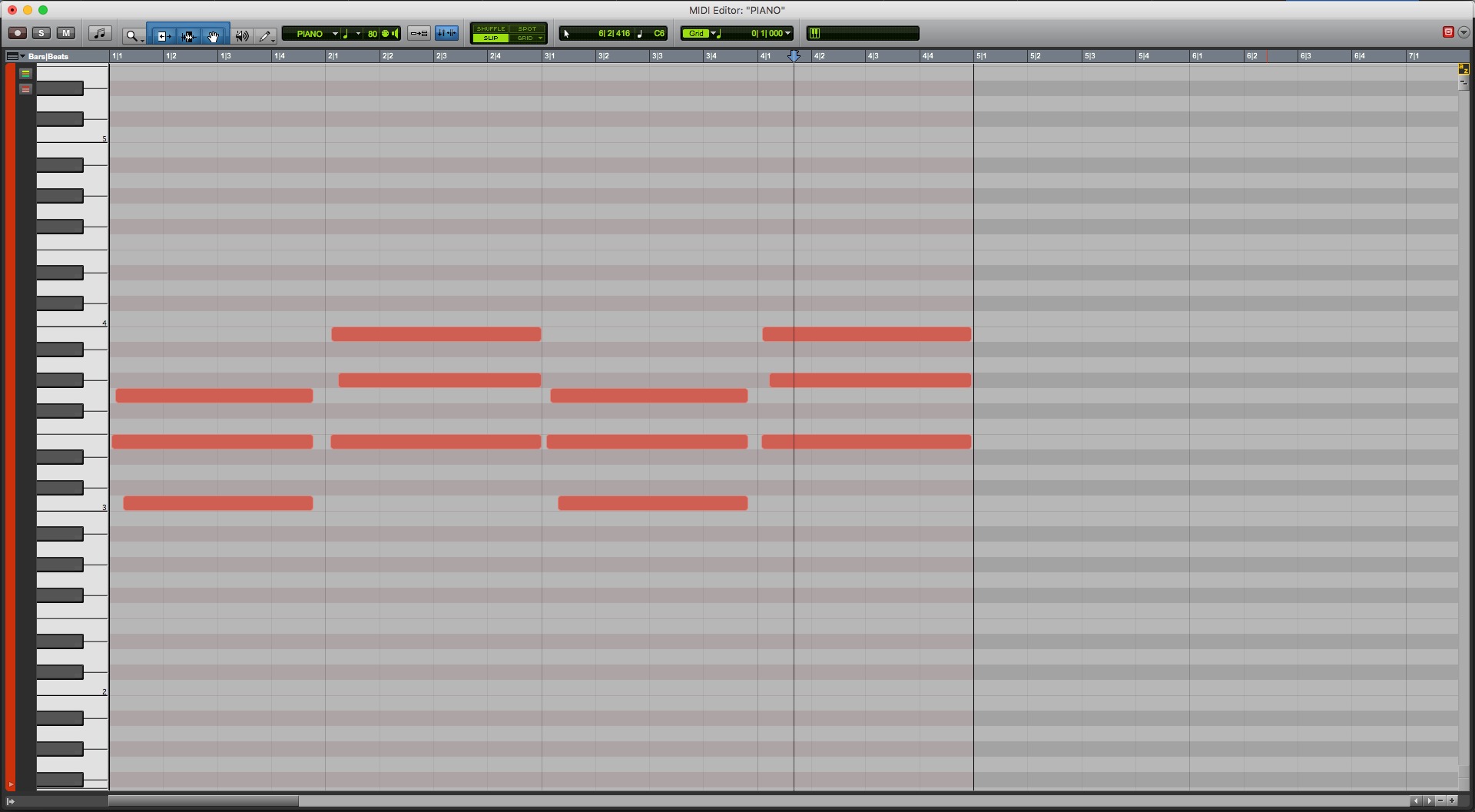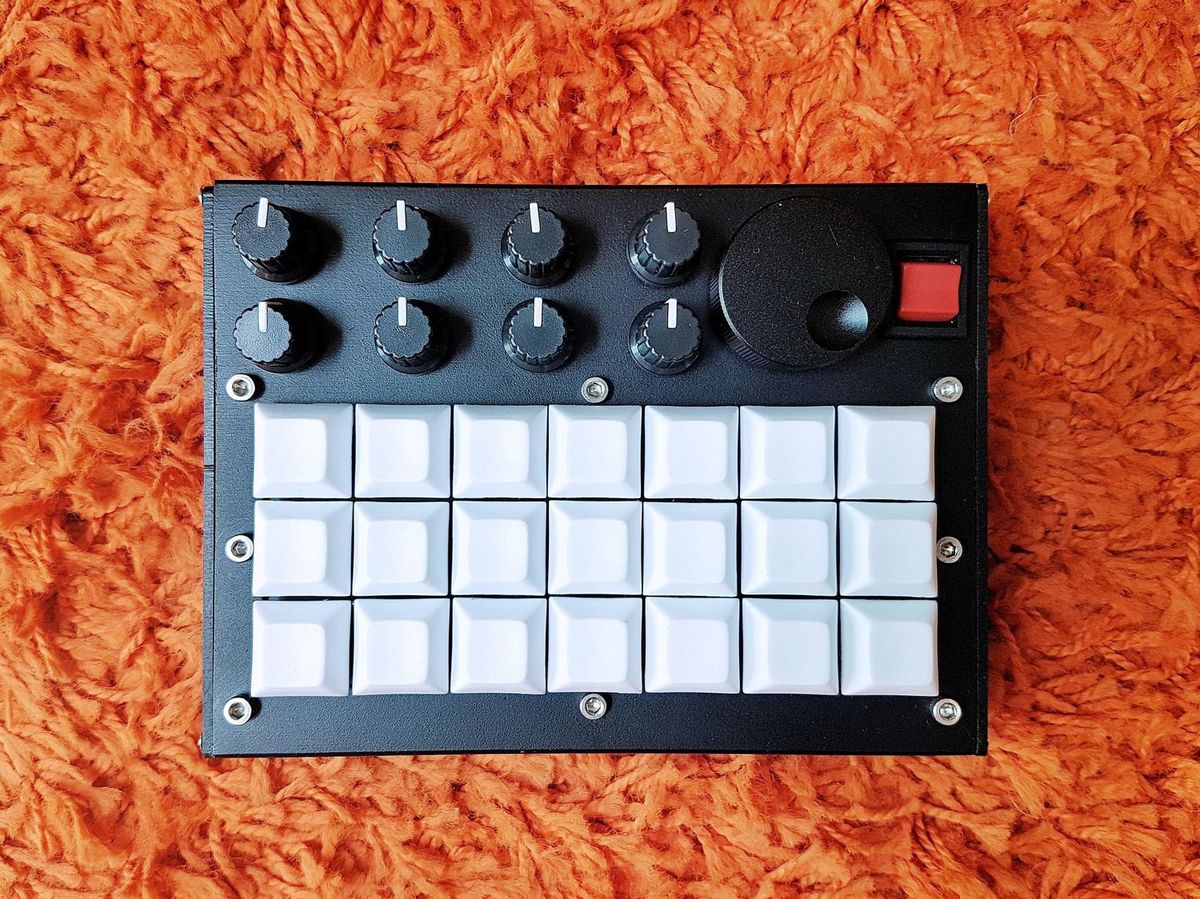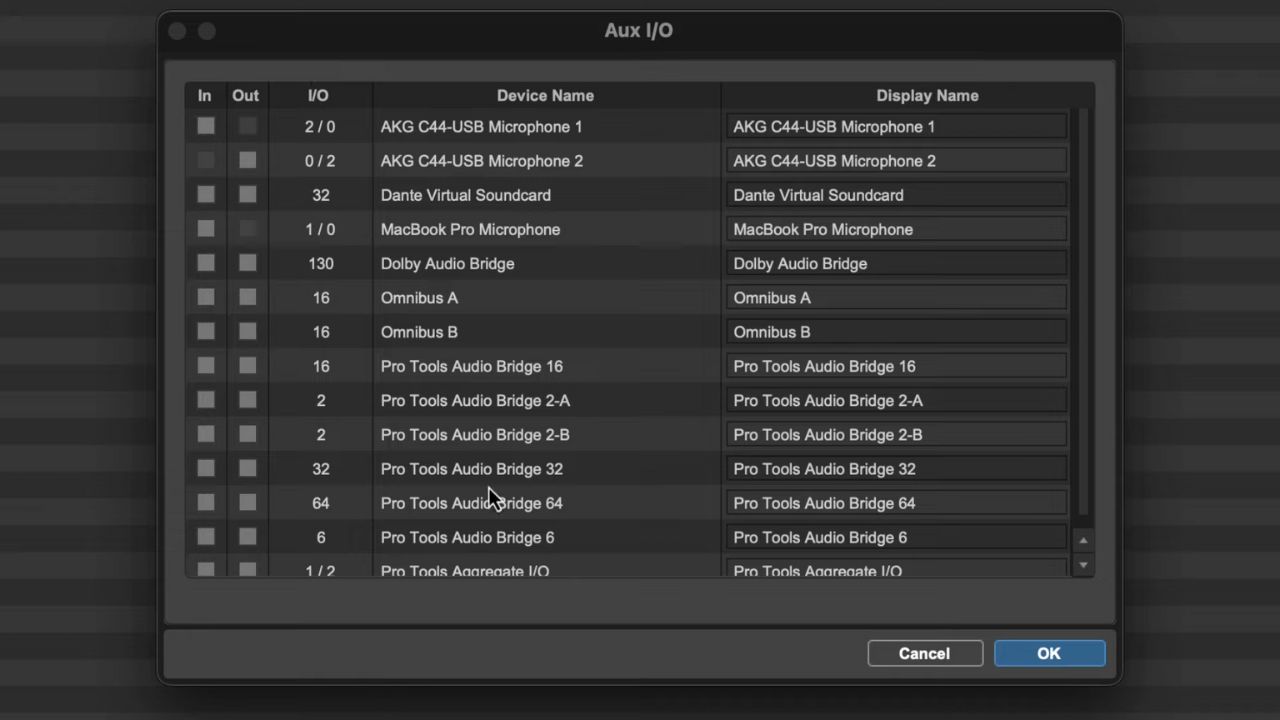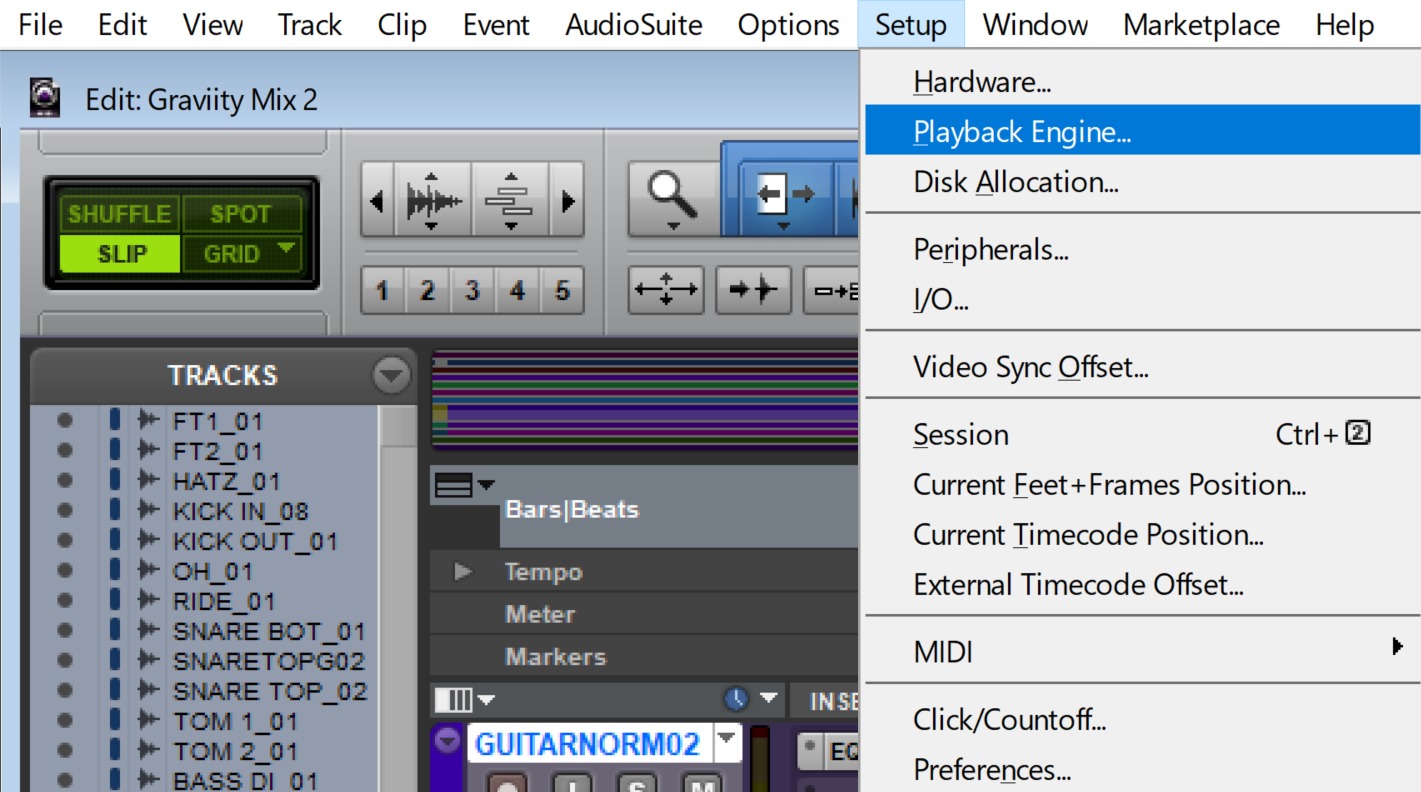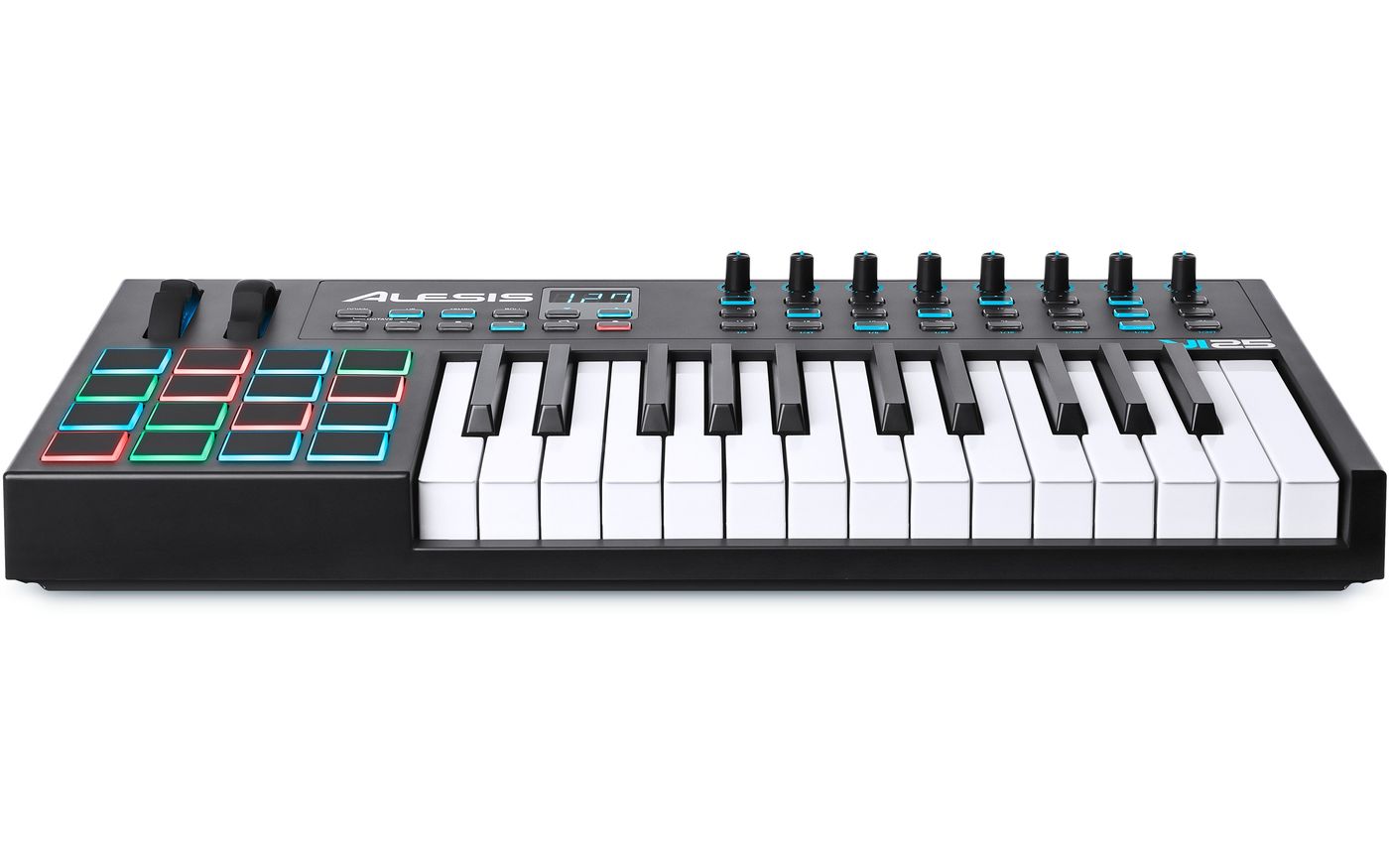Home>Production & Technology>MIDI>How To Connect MIDI Controllers To Pro Tools
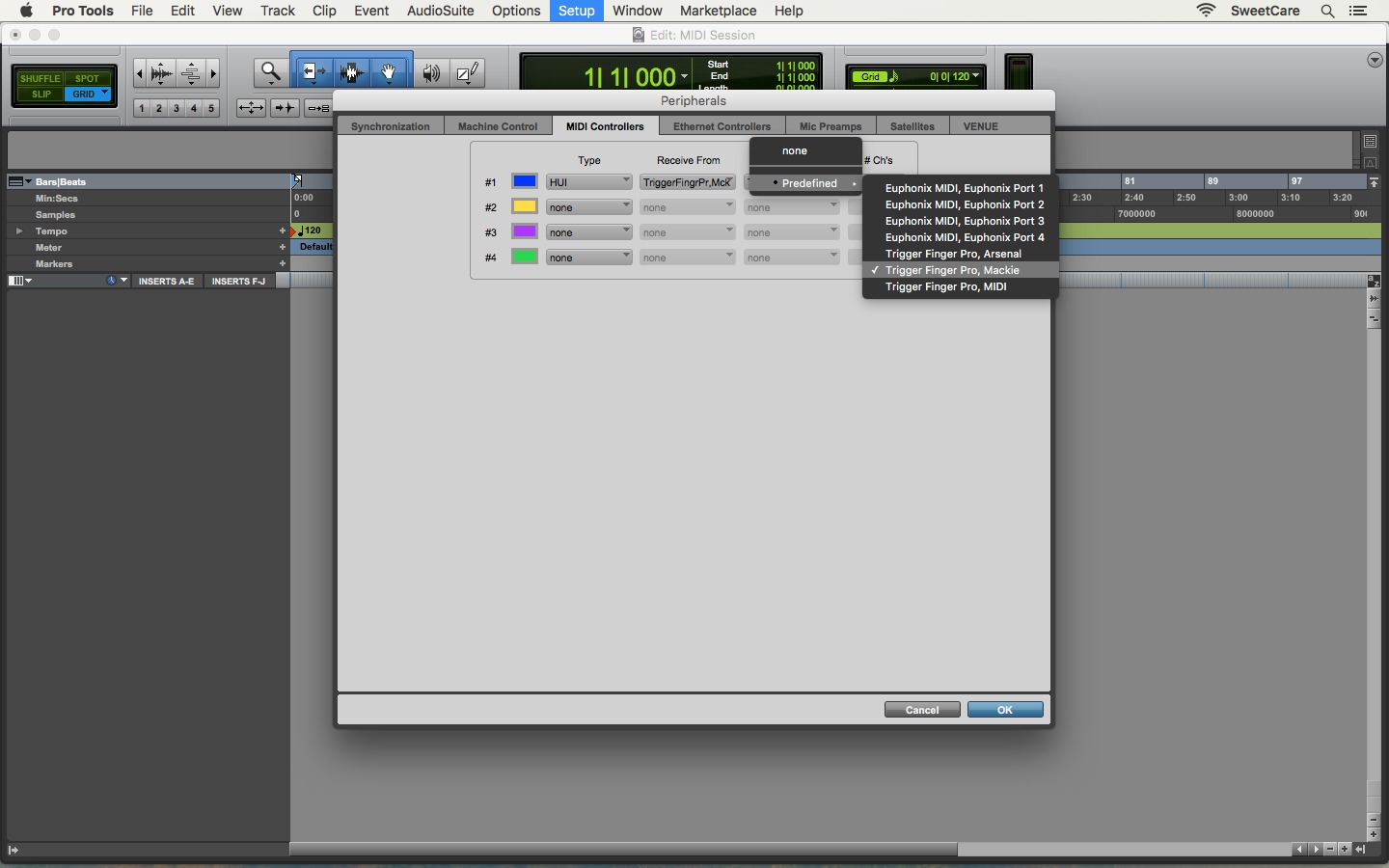

MIDI
How To Connect MIDI Controllers To Pro Tools
Published: February 21, 2024
Learn how to easily connect MIDI controllers to Pro Tools for seamless music production. Discover essential tips and tricks for integrating MIDI devices with Pro Tools.
(Many of the links in this article redirect to a specific reviewed product. Your purchase of these products through affiliate links helps to generate commission for AudioLover.com, at no extra cost. Learn more)
Table of Contents
Introduction
MIDI controllers are indispensable tools for musicians, producers, and audio engineers seeking to harness the power of digital music production. These versatile devices serve as the bridge between the physical world of musical instruments and the boundless capabilities of digital audio workstations (DAWs) like Pro Tools. By seamlessly integrating hardware and software, MIDI controllers empower users to manipulate sound, trigger samples, and craft intricate musical arrangements with unparalleled precision and expressiveness.
In this comprehensive guide, we will delve into the intricacies of connecting MIDI controllers to Pro Tools, a leading DAW renowned for its robust feature set and industry-standard status. Whether you're a seasoned music professional or an aspiring enthusiast, understanding the seamless integration of MIDI controllers with Pro Tools can elevate your creative endeavors to new heights.
Throughout this exploration, we will unravel the fundamental principles of MIDI controllers, unravel the fundamental principles of MIDI controllers, demystify the process of setting up these devices within Pro Tools, and uncover the myriad ways in which MIDI controllers can augment the recording and editing process. By the end of this journey, you will possess a deep understanding of how MIDI controllers serve as indispensable tools in the modern music production landscape, and how they can be harnessed to unleash your creative potential within Pro Tools.
Join us as we embark on this enlightening expedition into the realm of MIDI controllers and Pro Tools, where the convergence of artistry and technology opens doors to endless sonic possibilities.
Understanding MIDI Controllers
MIDI controllers, short for Musical Instrument Digital Interface controllers, are versatile devices that serve as the linchpin of modern music production setups. They come in various forms, including keyboards, pad controllers, drum machines, and more, each tailored to cater to specific musical needs and creative preferences. At their core, MIDI controllers are designed to transmit musical data, such as note information, velocity, modulation, and more, to digital audio workstations (DAWs) like Pro Tools, enabling users to interact with and manipulate virtual instruments and software-based sound modules.
These controllers are equipped with an array of assignable knobs, sliders, buttons, and pads, which can be customized to control a wide spectrum of parameters within Pro Tools. This level of customization empowers musicians and producers to shape sounds, trigger samples, and manipulate various aspects of their music with unparalleled precision and expressiveness. Furthermore, the integration of MIDI controllers with Pro Tools facilitates a seamless workflow, allowing users to translate their musical ideas into tangible sonic creations with remarkable fluidity.
In addition to their role in performance and composition, MIDI controllers also play a pivotal role in the realm of live music production. They enable performers to trigger backing tracks, manipulate effects in real-time, and improvise with a level of spontaneity that blurs the line between studio production and live performance. This convergence of technology and musical artistry has revolutionized the way musicians engage with their craft, fostering a dynamic and interactive approach to music creation and performance.
Moreover, the versatility of MIDI controllers extends beyond traditional musical applications, finding relevance in the realms of sound design, audio post-production, and multimedia artistry. Their ability to interface with a wide range of software and hardware makes them invaluable tools for sonic experimentation and creative exploration, transcending the confines of conventional musical paradigms.
In essence, MIDI controllers serve as the conduit through which musical ideas are translated into the digital domain, offering a tactile and intuitive means of interacting with the boundless sonic palette of Pro Tools. Their impact on modern music production is profound, empowering artists to sculpt soundscapes, breathe life into compositions, and push the boundaries of sonic innovation. As we venture deeper into the realm of MIDI controllers and Pro Tools, we will unravel the intricacies of integrating these devices into the music production workflow, unlocking a world of creative possibilities.
Setting Up MIDI Controllers in Pro Tools
Setting up MIDI controllers in Pro Tools is a pivotal step in unleashing their full potential within the music production environment. Pro Tools offers seamless integration with a wide array of MIDI controllers, providing users with the flexibility to map various parameters and harness the expressive capabilities of these devices. Whether you're working with a keyboard controller, pad controller, or any other MIDI-enabled hardware, the process of configuring these instruments within Pro Tools is straightforward and empowers you to tailor your setup to suit your creative workflow.
To begin the setup process, ensure that your MIDI controller is connected to your computer via USB or MIDI interface, and that it is powered on. Once the hardware connection is established, navigate to the 'Setup' menu in Pro Tools and select 'MIDI.' Within the MIDI settings, you can access the 'MIDI Input Devices' and 'MIDI Output Devices' sections, where you can specify the MIDI controller you wish to use for input and output.
After identifying your MIDI controller within the MIDI settings, Pro Tools allows you to create custom MIDI control maps, enabling you to assign specific functions to the various knobs, sliders, pads, and buttons on your controller. This level of customization empowers you to tailor the behavior of your MIDI controller to align with your production requirements, whether it involves manipulating virtual instruments, controlling mixer parameters, or triggering software-based effects.
Furthermore, Pro Tools offers the flexibility to create multiple MIDI control maps, allowing you to switch between different configurations seamlessly. This feature is particularly valuable in scenarios where you may need to adapt your MIDI controller's functionality across various stages of the production process, from composition and arrangement to mixing and automation.
In addition to custom control mapping, Pro Tools provides comprehensive support for MIDI learn functionality, enabling you to intuitively assign parameters within the software to your MIDI controller in real-time. This hands-on approach fosters a dynamic and interactive production environment, allowing you to fine-tune your musical ideas with precision and immediacy.
As you embark on the journey of setting up MIDI controllers in Pro Tools, it's essential to explore the extensive documentation and resources provided by both the software and the MIDI controller manufacturer. This ensures that you leverage the full capabilities of your hardware within the Pro Tools ecosystem, maximizing the potential for creative expression and seamless integration.
By mastering the art of setting up MIDI controllers in Pro Tools, you pave the way for a fluid and intuitive music production experience, where the boundaries between physical instrumentation and digital manipulation dissolve, giving rise to a harmonious convergence of musical creativity and technological prowess.
Configuring MIDI Controller Preferences
Configuring MIDI controller preferences within Pro Tools is a pivotal aspect of optimizing your music production workflow and harnessing the full potential of your hardware. Pro Tools offers a range of customizable preferences that allow you to tailor the behavior of your MIDI controllers to align with your creative needs and production style. By delving into the intricacies of MIDI controller preferences, you can fine-tune the responsiveness, mapping, and overall integration of your hardware within the Pro Tools environment, fostering a seamless and intuitive music production experience.
One of the key preferences to explore is the MIDI Control Surfaces settings within Pro Tools. This section enables you to define the behavior of your MIDI controllers, including how they interact with virtual instruments, software-based effects, and mixer parameters. By accessing the MIDI Control Surfaces preferences, you can specify the MIDI input and output ports for your controllers, ensuring that Pro Tools accurately communicates with your hardware and vice versa.
Furthermore, Pro Tools offers extensive customization options for MIDI controller mapping and assignments. Within the Preferences menu, you can delve into the MIDI section to configure specific control assignments, MIDI thru behavior, and other parameters that dictate how your MIDI controllers interact with Pro Tools. This level of control empowers you to create a tailored environment where your hardware seamlessly integrates with the software, allowing for intuitive and expressive manipulation of musical elements.
In addition to mapping preferences, Pro Tools provides comprehensive support for MIDI input quantization, enabling you to refine the timing and feel of MIDI data captured from your controllers. This feature is particularly valuable when recording performances or triggering musical elements, as it allows you to align MIDI events with precision, enhancing the overall musicality of your compositions.
Moreover, exploring the MIDI Preferences in Pro Tools unveils a wealth of options related to MIDI timing, synchronization, and playback behavior. These preferences enable you to fine-tune the responsiveness and timing accuracy of your MIDI controllers, ensuring that your musical gestures are translated faithfully within the digital realm. Whether you're capturing intricate performances or crafting intricate rhythmic patterns, these preferences play a crucial role in shaping the overall feel and dynamic response of your MIDI controllers within Pro Tools.
By immersing yourself in the realm of MIDI controller preferences within Pro Tools, you gain the ability to sculpt a production environment that aligns with your creative vision, fostering a symbiotic relationship between hardware and software. This level of customization empowers you to craft music with nuance, precision, and emotional depth, transcending the boundaries of traditional production techniques and embracing the boundless possibilities of MIDI-driven creativity within Pro Tools.
Using MIDI Controllers for Recording and Editing
Harnessing the expressive capabilities of MIDI controllers within Pro Tools transcends traditional recording and editing paradigms, ushering in a new era of dynamic and tactile music production. Whether you're capturing performances, sculpting arrangements, or fine-tuning musical nuances, MIDI controllers serve as indispensable tools for infusing your productions with a sense of immediacy and artistic finesse.
Recording Performances with MIDI Controllers
When it comes to capturing musical performances, MIDI controllers offer a level of nuance and expressiveness that extends beyond traditional recording methods. Whether you're playing a keyboard controller to lay down intricate melodies or using pad controllers to trigger rhythmic elements, the tactile nature of MIDI controllers imbues your performances with a sense of human touch and emotive depth. Within Pro Tools, the process of recording MIDI data from your controllers is seamless, allowing you to capture every subtle nuance and dynamic gesture with precision and fidelity.
Real-Time Editing and Manipulation
One of the most compelling aspects of using MIDI controllers in Pro Tools is the ability to engage in real-time editing and manipulation of musical elements. The assignable knobs, sliders, and pads on MIDI controllers empower you to sculpt sounds, modulate parameters, and shape arrangements on the fly, fostering a fluid and interactive production environment. Whether you're adjusting synth parameters, automating effects, or manipulating MIDI data, the hands-on approach facilitated by MIDI controllers elevates the editing process to a deeply immersive and intuitive experience.
Dynamic Mixing and Automation
In addition to recording and editing, MIDI controllers play a pivotal role in the realm of mixing and automation within Pro Tools. By assigning mixer parameters and automation controls to your MIDI controllers, you can engage in dynamic and tactile mixing, shaping the sonic landscape of your productions with precision and finesse. The ability to manipulate faders, control panning, and fine-tune effects in real-time empowers you to breathe life into your mixes, infusing them with a sense of organic movement and spatial depth that transcends traditional mixing approaches.
Seamless Integration with Virtual Instruments
Furthermore, MIDI controllers seamlessly integrate with virtual instruments within Pro Tools, allowing you to explore a vast sonic palette and unleash your creative potential. Whether you're triggering samples, playing virtual synths, or manipulating software-based instruments, the tactile interaction afforded by MIDI controllers fosters a deeply immersive and expressive approach to music creation. This seamless integration blurs the boundaries between physical instrumentation and digital soundscapes, offering a harmonious convergence of traditional performance techniques and modern production methodologies.
In essence, using MIDI controllers for recording and editing within Pro Tools opens doors to a world of expressive possibilities, where the boundaries between performance, production, and manipulation dissolve, giving rise to a symbiotic relationship between artistry and technology. By embracing the dynamic and tactile nature of MIDI controllers, you embark on a creative journey that transcends conventional recording and editing paradigms, ushering in a new era of musical expression and sonic innovation within the realm of Pro Tools.
Conclusion
In conclusion, the integration of MIDI controllers with Pro Tools heralds a paradigm shift in the landscape of modern music production, empowering artists, producers, and audio engineers to transcend traditional boundaries and unleash their creative potential with unparalleled precision and expressiveness. As we traverse the intricacies of MIDI controllers and their seamless integration within Pro Tools, we unearth a world of possibilities where artistry and technology converge to shape the sonic tapestries of tomorrow.
The journey of understanding MIDI controllers unveils their pivotal role as the conduit between physical musical expression and the boundless capabilities of digital audio workstations. Whether in the form of keyboard controllers, pad controllers, or drum machines, these versatile devices serve as vessels of creativity, translating musical gestures into tangible digital manifestations. Their impact extends beyond traditional music production, permeating realms such as live performance, sound design, and multimedia artistry, where their expressive capabilities redefine the boundaries of sonic exploration.
Moreover, the process of setting up and configuring MIDI controllers within Pro Tools unfolds a realm of customization and seamless integration, enabling users to tailor their production environment to suit their creative workflow. From custom control mapping to dynamic MIDI learn functionality, Pro Tools provides a fertile ground for artists to sculpt a production environment that aligns with their artistic vision, fostering a symbiotic relationship between hardware and software.
The utilization of MIDI controllers for recording, editing, and dynamic manipulation within Pro Tools transcends conventional paradigms, ushering in an era of tactile and immersive music production. Whether capturing performances with emotive depth, engaging in real-time editing and manipulation, or sculpting mixes with dynamic precision, MIDI controllers imbue the production process with a sense of immediacy and artistic finesse. Their seamless integration with virtual instruments further amplifies the sonic palette at the disposal of creators, blurring the lines between physical instrumentation and digital soundscapes.
In essence, the convergence of MIDI controllers and Pro Tools represents a harmonious marriage of artistry and technology, where the expressive capabilities of hardware intertwine with the boundless possibilities of software to shape the future of music production. As we embrace this synergy, we embark on a journey of sonic innovation and creative exploration, transcending the confines of traditional production methodologies and embracing a dynamic and tactile approach to music creation. With MIDI controllers as our steadfast companions in this voyage, we stand poised to unlock new realms of musical expression and redefine the boundaries of sonic storytelling within the realm of Pro Tools.


